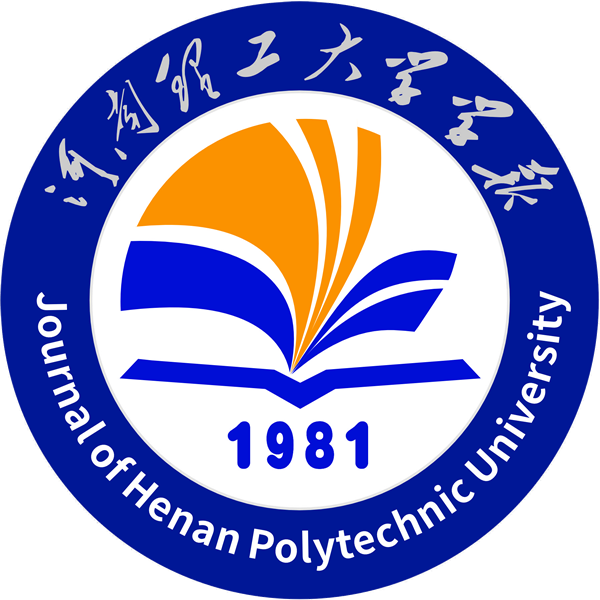| 时间: 2022-11-10 | 次数: |
李从强, 杨明坤, 付佳,等.煤炭地下气化废水的微生物修复研究[J].河南理工大学学报(自然科学版),2022,41(6):8-15.
LI C Q, YANG M K, FU J,et al.Study on microbial remediation of underground coal gasification wastewater[J].Journal of Henan Polytechnic University(Natural Science) ,2022,41(6):8-15.
煤炭地下气化废水的微生物修复研究
李从强1, 杨明坤1, 付佳1, 谌伦建1, 徐冰1,2, 吴咏梅3, 马朝伟3, 刘松4
1.河南理工大学 河南省煤炭绿色转化重点实验室,河南 焦作 454000;2.河南理工大学 煤炭安全生产与清洁高效利用省部共建协同创新中心,河南 焦作 454000;3.新疆工程学院 化学与环境工程系,新疆 乌鲁木齐 830000;4.铜仁学院 材料与化学工程学院,贵州 铜仁 554300
摘要:煤炭地下气化产生的废水污染直接限制了该技术的推广应用,针对此问题,采用筛选到的降解苯酚菌JP和降解萘菌KN,对模拟煤炭地下气化产生的废水进行降解修复试验。结果表明:经过72 h培养,煤炭地下气化废水的TOC下降80%以上,有机污染物种类减少近50%,酚类、杂环化合物、多环芳烃为代表的有机污染物种类和质量浓度减幅明显;重金属离子质量浓度均有所降低,Pb,Cd,Cu质量浓度降幅较大,最高可达100%;降解菌能在煤炭地下气化废水中存活,并能有效去除有机污染物和重金属离子。降解机理研究表明,JP菌降解煤炭地下气化废水中的吲哚时与喹啉和酚类物质存在共代谢,其对喹啉的降解遵循吡啶环开环途径;KN菌对喹啉的降解同时存在苯环开环与吡啶环开环2种途径,对多环芳烃的降解遵循水杨酸途径;两菌混合在对中间产物和终产物的利用上存在协同机制,有利于有机污染物的彻底清除。
关键词:煤炭地下气化;有机污染;微生物;修复;降解机理;地下水污染
doi:10.16186/j.cnki.1673-9787.2021090028
基金项目:国家自然科学基金-新疆联合基金资助项目(U1803114);河南省科技攻关项目(212102311069);河南省高校重点科研计划项目(20A530003);河南省高校基本科研业务费专项项目(NSFRF200308)
收稿日期:2021/09/06
修回日期:2021/09/27
出版日期:2022/11/25
Study on microbial remediation of underground coal gasification wastewater
LI Congqiang1, YANG Mingkun1, FU Jia1, CHEN Lunjian1, XU Bing1,2, WU Yongmei3, MA Chaowei3, LIU Song4
1.Henan Key Laboratory of Coal Green Conversion,Henan Polytechnic University, Jiaozuo 454000,Henan,China;2.Collaborative Innovation Center of Coal Work Safety and Clean High Efficiency Utilization,Henan Polytechnic University,Jiaozuo 454000,Henan,China;3.Department of Chemistry and Environmental Engineering,Xinjiang Institute of Engineering,Urumchi 834000,Xinjiang,China;4.School of Materials Science and Engineering,Tongren University,Tongren 554300,Guizhou,China
Abstract:The risk of groundwater pollution caused by underground coal gasification directly limits the application of this technology.In this paper,the phenol degrading bacteria JP and naphthalene degrading bacteria KN were selected to degrade and repair the gas washing water produced by simulated underground coal gasification.After 72 hours of culture,the TOC value of gas washing water decreased by more than 80%,the types of organic pollutants decreased by nearly half,the types and concentrations of highly toxic organic pollutants represented by phenols,heterocyclic compounds and polycyclic aromatic hydrocarbons decreased significantly.The concentration of heavy metal ions decreased,and the concentration of Pb,Cd and Cu decreased greatly,even up to 100%.The results showed that the degrading bacteria could survive in underground coal gasification wastewater and could effectively remove organic pollutants and heavy metal ions.The degradation mechanism showed that JP bacteria had a cometabolism with quinoline and phenols when degrading indole in gas washing water,and its degradation of quinoline followed the pyridine ring opening pathway.The degradation of quinoline by KN bacteria had two ways as benzene ring opening and pyridine ring opening,and the degradation of aromatic hydrocarbons follows the salicylic acid path.There was a synergistic mechanism in the utilization of intermediate products and end products,which was conducive to the complete removal of organic pollutants.
Key words:underground coal gasification;organic pollution;microorganism;remediation;degradation mechanism;groundwater pollution
- 附件【002_2021090028_李从强_H.pdf】已下载次

